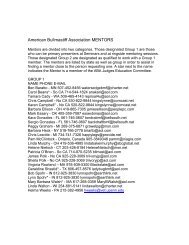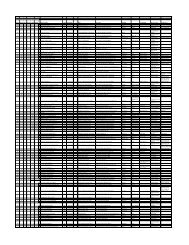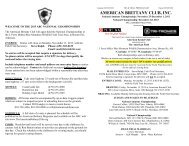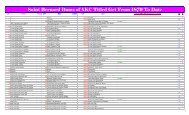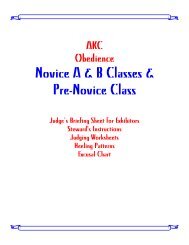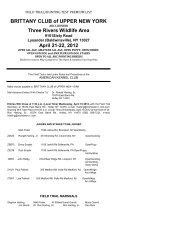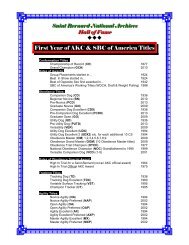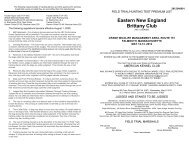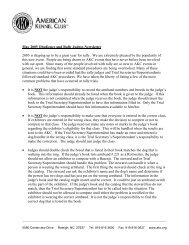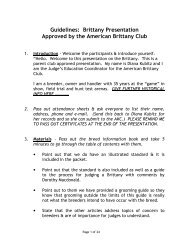The Skye Terrier - National Breed Clubs - American Kennel Club
The Skye Terrier - National Breed Clubs - American Kennel Club
The Skye Terrier - National Breed Clubs - American Kennel Club
Create successful ePaper yourself
Turn your PDF publications into a flip-book with our unique Google optimized e-Paper software.
Color– <strong>The</strong> coat must be of one over-all color at the skin but may be of<br />
varying shades of the same color in the full coat, which may be black,<br />
blue, dark or light grey, silver platinum, fawn or cream. <strong>The</strong> dog must<br />
have no distinctive markings except for the desirable black points of<br />
ears, muzzle and tip of tail, all of which points are preferably dark even<br />
to black. <strong>The</strong> shade of head and legs should approximate that of the<br />
body. <strong>The</strong>re must be no trace of pattern, design or clear-cut color variations,<br />
with the exception of the breed’s only permissible white which<br />
occasionally exists on the chest not exceeding 2 inches in diameter.<br />
<strong>The</strong> puppy coat may be very different in color from the adult coat.<br />
<strong>The</strong>refore, as it is growing and clearing, wide variations of color may<br />
occur; consequently, this is permissible in dogs under 18 months of<br />
age. However, even in puppies there must be no trace of pattern,<br />
design, or clear-cut variations with the exception of the black band<br />
encircling the body coat of the creme colored dog, and the only permissible<br />
white which, as in the adult dog, occasionally exists on the<br />
chest not exceeding 2 inches in diameter.<br />
Permissible colors are Black, Blue,<br />
Cream, Fawn, Gray, Platinum and<br />
Silver.<br />
Coats may have varying shades of<br />
the same color in the coat.<br />
<strong>The</strong>re should never be a trace of<br />
pattern on a puppy or dog. When<br />
evaluating the dog as a whole,<br />
coat color should be one of the<br />
last considerations.<br />
Up to a 2” area of white on the<br />
chest on a mature dog is allowed.<br />
Regardless of a dog’s body color,<br />
a darker color variation on the<br />
ears, muzzle and tail tip are preferred.<br />
Its double coat has a long, hard outer coat, free of curl, and a soft,<br />
wooly undercoat.<br />
page 24<br />
<strong>Skye</strong> <strong>Terrier</strong> <strong>Club</strong> of America





